Our areas of focus

Note: These are just some of the areas and services that Lab research targets


Mission Statement
Future Care Lab in Japan aims to reinvent caregiving, blending technology and the human touch. By solving the challenges of a “super-aging society, ” the Lab will enable the creation of a thriving, highly productive and valuable care business. The Lab will help build a society where the elderly can live independently and with dignity today and into the future.
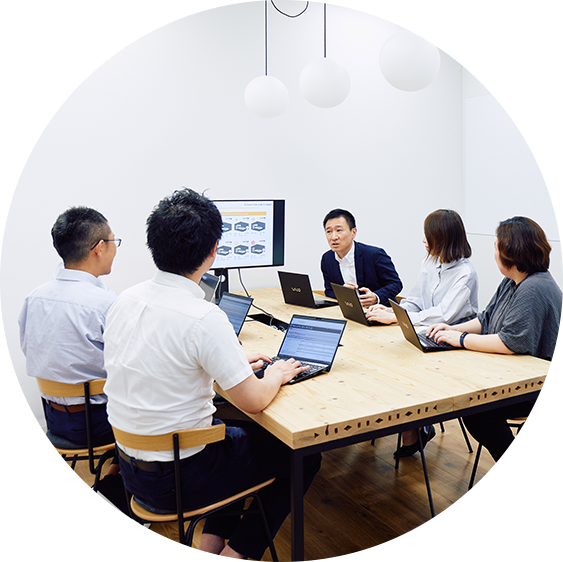
In February 2019, SOMPO Holdings and SOMPO Care opened the Future Care Lab in Japan, a research facility in Shinagawa, Tokyo dedicated to testing cutting-edge Japanese and international technologies.
The Lab actively employs the latest ICT and digital solutions as a way to reinvent caregiving by blending technology with a human touch, resulting in better-quality senior care services that are easier on caregivers and allow for the creation of sustainable caregiving business models. Ultimately, we want to help create a world where seniors are able to live happier, healthier lives.
We know there are things that only a human touch can provide, and we make those parts of caregiving our focus in order to improve the overall quality of senior care services. Our aim is always to improve quality of life—for the elderly and for others who benefit from our solutions.
Faced with personnel shortages and the heavy physical and emotional toll of caregiving work, Japan is hungry for solutions to what has become a widespread social challenge—and the Lab is committed to finding them.
Improve quality of life
for seniors
We’re using the latest technology to create more options for those involved in senior care, focusing on services that only human caregivers can provide while providing solutions that support independence and better quality of life for seniors.
Lighten the workload to
ease the burden of
nursing care
Caregivers are placed under heavy physical and emotional burden, including back strain—and we want to make the working environment easier on them.
Boost productivity in senior care services
Technology helps increase productivity without compromising quality of care, and use the fund generated to improve the treatment of caregivers.
The Lab matches seed ideas from development companies
with the needs of nursing care settings.
Needs at
nursing care settings
Matching services
Vendor seed
ideas
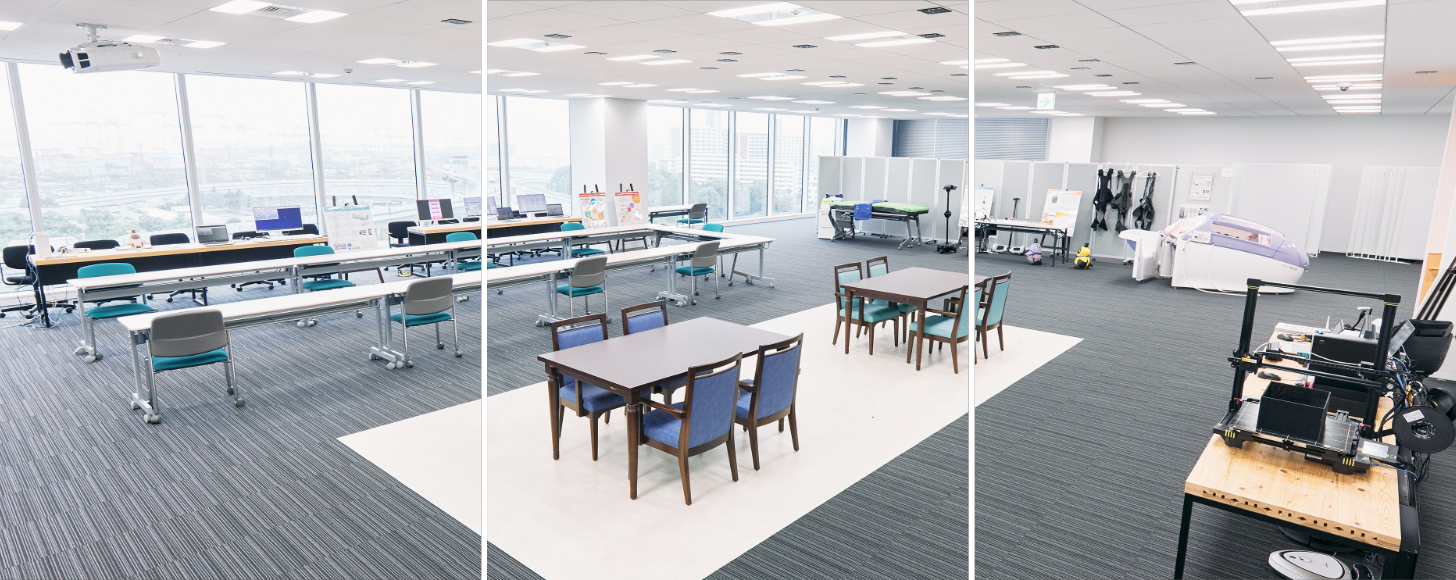
Widening the gap between available caregivers and caregiving demand
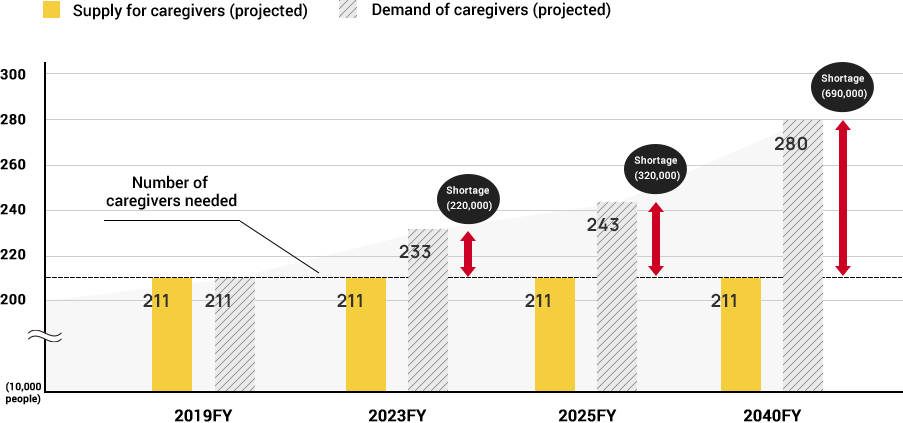
The burden on individual caregivers
will only continue to increase
Source: Japan Ministry of Health, Labour and Welfare, “Required Number of Caregiving Staff in the 9th Term Care Insurance Business Plan” (released July 2024).
The most pressing problem facing senior care settings today is that demand for caregivers far outweighs the supply. As Japan’s society ages and people have fewer children, the percentage of seniors increases, which in turn translates to a greater need for caregiving services and fewer young people to provide them. There is a tremendous shortage, therefore, of staff members responsible for providing these services.
Estimates of a shortage of 250,000 caregivers in 2026 and 570,000 in 2040 predict that without a change of course, an increasing number of seniors who want nursing care will not be able to get it, leading to a major social problem. The situation will inevitably increase the burden on individual workers, eventually making it impossible for them to continue based solely on a desire to help. Sadly, the stress is already becoming difficult for them to bear.
We established the Future Care Lab in Japan because the problems we’re facing demand a ground-up solution, and we believe that technology has the potential to bring about the needed changes.
Both caregivers and care recipients are increasingly willing and eager to embrace technology-powered solutions—yet at the same time, caregivers are expected to focus on services that only human beings can provide.


Note: These are just some of the areas and services that Lab research targets
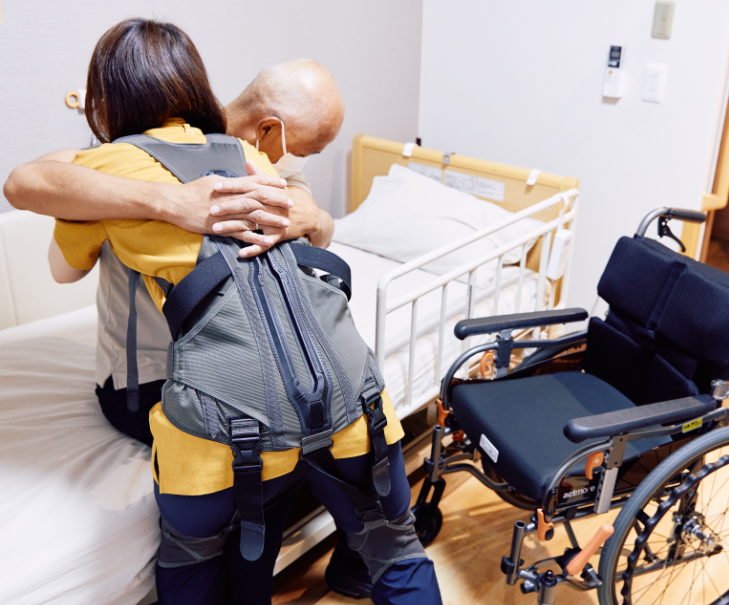
What senior care facilities list as their “top three” forms of assistance—meals, bathing, and elimination—make up some 65% of all caregiving tasks.
There is an urgent need to increase the productivity of tasks associated with these three areas by replacing human labor with technological solutions. At mealtime, for example, every effort should be made to have human caregivers assist with feeding tasks—while technology should ideally take over for them in peripheral tasks like getting seniors to dining halls, serving food, cleanup, and recordkeeping.
The differences in facility-based and in-home care environments also result in different challenges, so the Lab collects information on the needs of senior care settings through industry analysis, insider meetings, and other means, and matches them to the solutions being offered through vendor company technology and expertise. The result is the creation of products that will truly be of practical use on the front lines.
The Lab uses four criteria to determine whether a given technology is needed in senior care settings.
These standards were independently formulated based on the Assistive Technology Assessment Tool (ATAT) model developed in Denmark.
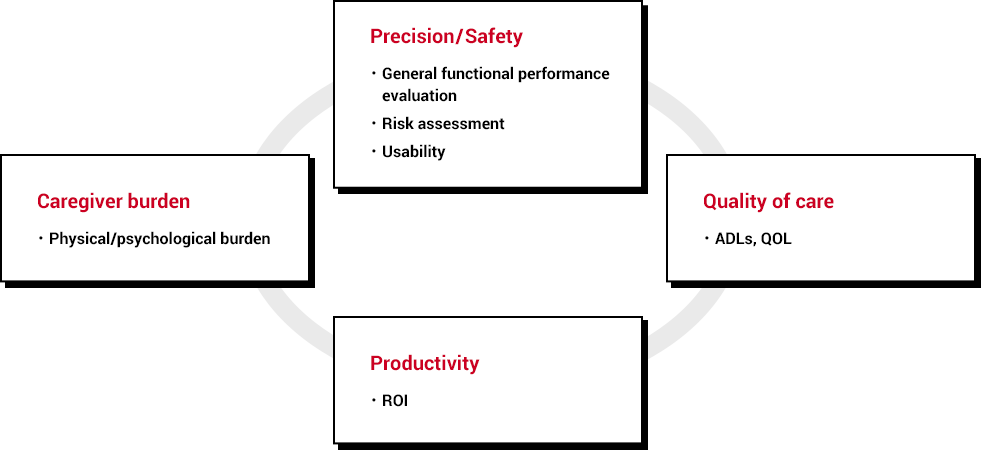
SOMPO Holdings, Inc. and SOMPO Care, Inc. launched Future Care Lab in Japan, a project designed to reinvent caregiving by blending technology with a human touch. The research facility was established to test cutting-edge technology both in Japan and overseas.
Became a living laboratory for the development, testing, and popularization of technology participating in the MHLW project to build a platform for developing, testing, and popularizing senior care robots
Senior care robot platform
(Japanese Only)
SOMPO Holdings and GROOVE X sign a business partnership agreement and begin jointly developing solutions using LOVOT for senior living assistance and memory care.
Details (Japanese Only)
SOMPO Holdings, Inc. and the National Institute of Advanced Industrial Science and Technology (AIST) sign a comprehensive partnership agreement to resolve Japan’s social challenges.
Future Care Lab in Japan aims to stimulate Japan’s economic growth through the widespread adoption of the outcomes of efficiently-conducted joint research in the senior care field.
Details (Japanese Only)